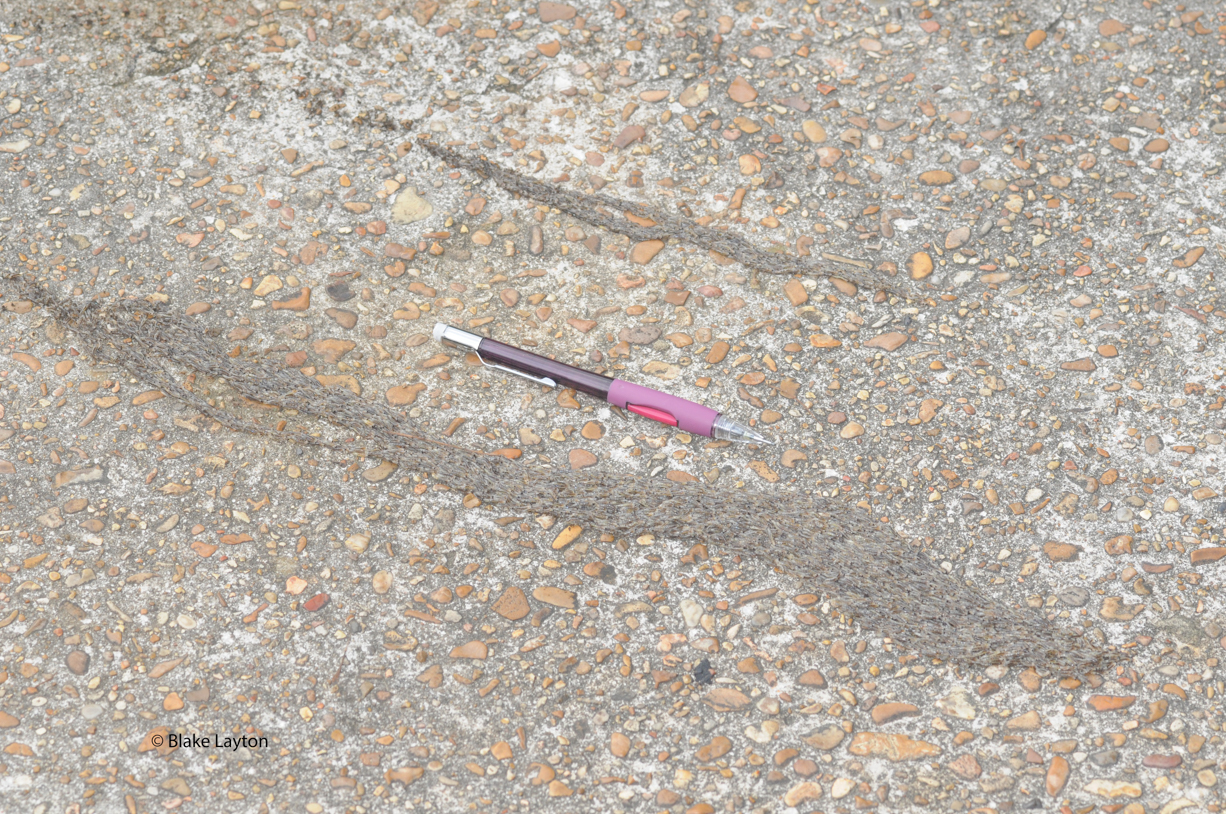Snake-worms, Vol. 9, No. 04
Darkwinged Fungus Gnat Larvae
Order: Diptera
Family: Sciaridae
“We were sitting at the breakfast table drinking coffee when we looked out the window and saw what appeared to be a snake crawling across the driveway. When we went outside for a closer look, we saw it was really a long, wiggling mass of little black-headed worms. Neither of us have ever seen anything like this before. What are they?”
These are the larvae of dark-winged fungus gnats. Although dark-winged fungus gnats are quite common, it is rare to witness a large mass movement of larvae like this. It happens, both here in the US and in many other parts of the world, but it is not something that is commonly observed or well-understood. The mass of larvae in this photo is about 18 inches long, but “snake-worms” can be several feet in length.
Although there many species of dark-winged fungus gnats, most go largely unnoticed. Adults of some species occasionally emerge in large numbers and may even create a short-lived nuisance. One species, which is black with an orange abdomen, occasionally occurs in large numbers, especially in the northern portion of the state (See Bug's Eye View No. 7 of 2015 ). This orange and black color pattern causes it to be mistaken for lovebugs, but lovebugs are larger and have an orange thorax and black abdomen.
Mature darkwinged fungus gnat larvae are ¼ to ½ inch long and legless with black heads and translucent or milky-colored bodies. They feed on decaying organic matter in settings such as grass thatch, leaf litter, or mulch. As with most flies that feed in such situations, mature larvae tend to migrate to drier, more protected environments to pupate, and this appears to be what is happening with “snake-worms”. The larvae migrate as a group by crawling over one another. Most of this activity occurs on the soil surface beneath the grass, where it goes unnoticed and it is when the migrating larvae attempt to cross a driveway, other hard surface, or closely mown turfgrass that they are most likely to be observed.
Blake Layton, Extension Entomology Specialist, Mississippi State University Extension Service.
The information given here is for educational purposes only. Always read and follow current label directions. Specific commercial products are mentioned as examples only and reference to specific products or trade names is made with the understanding that no discrimination is intended to other products that may also be suitable and appropriately labeled.
Mississippi State University is an equal opportunity institution.
Bug’s Eye View is now on Facebook. Join the Bug's Eye View Facebook group here.


